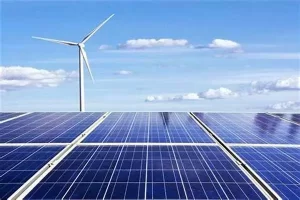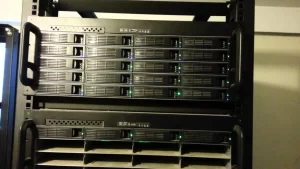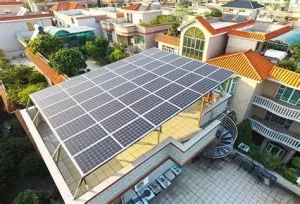Exploring Home Solar Panels: Injecting Green Energy into Your Home
In today’s era of pursuing sustainable development and ecofriendly living, home solar panels are increasingly becoming a popular choice, providing clean and renewable energy for our households. Today, let’s delve into the wonderful world of them .

Home solar panels are essentially devices composed of multiple solar photovoltaic cells. These cells are typically made from semiconductor materials like silicon, possessing unique photovoltaic properties.
When sunlight strikes the solar panels, the energy of photons excites electrons within the solar cells, freeing them from atomic bonds to create free electrons and holes. These free electrons move directionally within the solar panel due to the internal electric field, generating a direct current (DC). Through a series of circuit connections and conversion, this DC can be transformed into alternating current (AC) used to power various household appliances.
Using solar panels can significantly reduce reliance on traditional fossil fuels, thereby lowering greenhouse gas emissions. Every kilowatthour of solar electricity generated equates to approximately 0.9 kilograms of carbon dioxide emissions saved. Imagine the substantial contribution to Earth’s ecological environment as more households adopt solar panels!
Once a solar panel system is installed, you can utilize selfgenerated solar power during the day to meet household electricity demands, with surplus electricity sold back to the grid. This not only reduces your electricity bills but in some cases can even generate income.
Coupled with energy storage systems, home solar panels can provide critical electricity support for your household during natural disasters or grid failures, ensuring essential living needs are met even in emergencies.
Before deciding to install home solar panels, a comprehensive assessment of your property is necessary. This includes evaluating roof orientation, tilt angle, area, and loadbearing capacity. Additionally, understanding local sunlight conditions and relevant policies and regulations is crucial.
Before deciding to install home solar panels, a comprehensive assessment of your property is necessary. This includes evaluating roof orientation, tilt angle, area, and loadbearing capacity. Additionally, understanding local sunlight conditions and relevant policies and regulations is crucial.
Typically, a southfacing, unobstructed roof with moderate tilt angles is ideal for maximizing sunlight reception.
Installing solar panels usually requires a professional installation team. They begin by mounting racks on the roof, then affixing the solar panels to these racks and connecting wires and inverters. The entire installation process must strictly adhere to safety regulations and electrical standards to ensure system stability.Regular maintenance is essential to ensure longterm efficient operation of the solar panel system. This includes cleaning dust and debris from the solar panel surfaces, checking for loose electrical connections, and monitoring inverter operation status.Generally, it’s recommended to conduct comprehensive inspections and cleaning at least twice a year.
The initial cost of installing a solar panel system can vary depending on system size, brand, and installation complexity. Typically, a mediumsized system may require tens of thousands of dollars in investment. However, costs are gradually decreasing with technological advancements and increased market competition.
To encourage renewable energy development, many countries and regions have implemented subsidy policies. These policies may include cash subsidies, tax incentives, and feedin tariffs. Understanding and fully utilizing these policies can significantly reduce your initial investment in installing solar panels
Despite higher initial investments, home solar panel systems can provide substantial economic returns over their lifespan (typically 25 30 years). Savings on electricity bills, income from selling surplus electricity, and potential subsidies often allow for a return on investment within several years, followed by nearly free electricity supply in subsequent years.
Common Questions and Answers
Do Solar Panels Work on Cloudy or Rainy Days?
While solar panels generate the most electricity under sunny conditions, they can still produce some electricity on cloudy or rainy days. Generation may be reduced, but it can still provide partial electricity support to the household.
Generally, highquality solar panels can have a lifespan of 25 30 years or even longer under normal use and maintenance conditions.
When installed by a professional team with appropriate protective measures, solar panels typically do not damage roofs. In fact, they can provide some protection and potentially extend the roof’s lifespan.
With ongoing technological advancements, the efficiency of solar panels will continue to improve while costs further decrease. Additionally, integration with energy storage technologies will become tighter, allowing households to better utilize solar power during nighttime and cloudy days. Moreover, solar panel designs will become more aesthetically pleasing and diverse, blending better with architectural aesthetics.
Home solar panels are not just an energy solution but also an investment in the future and a commitment to ecofriendly living. Let’s embrace this green energy technology actively and create a cleaner, sustainable future for our homes.
Contact us
- Email:[email protected]
- Tel: +86 13651638099
- Address: 333 Fengcun Road, Fengxian District, Shanghai
Get A Quote Now!

Read more

Unveiling Photovoltaic+Energy Storage: Four Major Application Scenarios Leading the Future of Energy
In this way, the energy landscape is evolving, and one of the most thrilling developments in renewables is the integration of photovoltaics energy storage.

From Theory to Practice: Four Methods for Estimating Photovoltaic Power Generation
Photovoltaic power generation has become an essential part of modern energy solutions, particularly in home solar systems and distributed power applications

Rack-Mounted Lithium Iron Batteries: Creating Efficient and Reliable Energy Storage Solutions
When it comes to modern energy solutions, rack-mounted lithium iron batteries are taking center stage in a variety of industries. Whether you’re powering data centers, stabilizing energy for households, or keeping critical systems online at 5G base stations, these batteries have become the unsung heroes of our electrified world.

Late Night Energy Saving Tips: How to Maximize Electricity Savings During Off-Peak Hours
With rising energy costs, homeowners are increasingly exploring innovative ways to save on their electricity bills. One effective approach is utilizing off-peak hours—times when electricity rates are significantly lower due to reduced demand.
